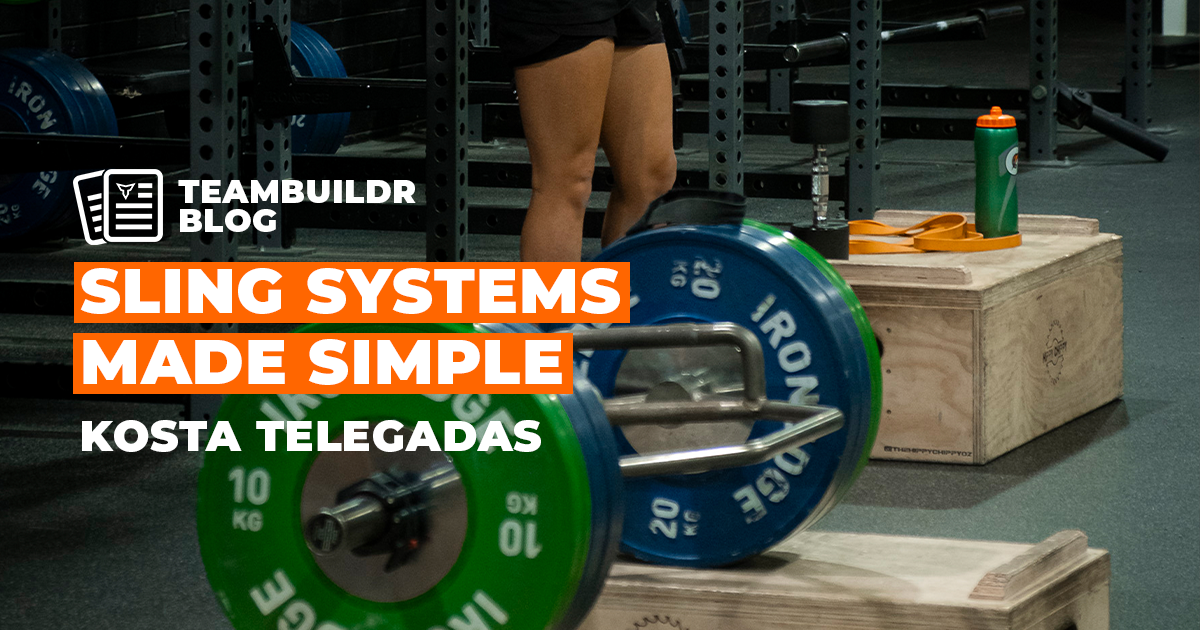Understanding & Applying The Dynamic Effort Method In TSAC
Let’s Define Dynamic Effort:
The dynamic effort method is a technique used in strength training that involves lifting a submaximal weight at a high velocity. This method has been used by powerlifters and athletes to improve their explosiveness and speed, and has been found to be highly effective in increasing muscle power and overall strength. The intensity zones range roughly from 50-80% of your 1 rep max for about 8-12 sets of 2-3 reps.
What Are the Benefits?
One of the main benefits of the dynamic effort method is that it allows for the development of high levels of muscle power. Power is defined as the ability to produce force quickly, and this is precisely what the dynamic effort method aims to do. By lifting a submaximal weight at a high velocity, the muscles are forced to contract quickly, which leads to an increase in power output. This is particularly beneficial for athletes and powerlifters, as it allows them to move more weight faster, which can improve their performance in competitions.
Another benefit of the dynamic effort method is that it can help to improve neuromuscular coordination. When lifting a submaximal weight at a high velocity, the body's nervous system is forced to work harder to coordinate the movement. This leads to an improvement in the way the brain and muscles communicate, which can result in more efficient and effective movement patterns. This is especially important for tactical athletes, as it can help to improve their coordination, rate of force development, and overall performance in the field.
In addition, the dynamic effort method can also help to increase muscle hypertrophy in certain cases. Hypertrophy is the process of increasing the size of muscle fibers, and this can occur when the muscle is subjected to a high level of tension. The high velocity at which the weight is moved during the dynamic effort method creates a high level of tension in the muscles, which can lead to muscle hypertrophy. This added benefit is particularly beneficial for bodybuilders, as it allows them to increase muscle size and improve their overall physique. However, within the tactical setting, it is imperative to have enough muscle mass to support the body, increase overall force production in addition to having a stronger hormonal system/immune system to recover from time in the field.
Finally, the dynamic effort method is a safe and effective way to increase overall strength. When lifting a submaximal weight at a high velocity, the risk of injury is low, as the weight is not heavy enough to cause a high rate of damage to the tendons and joints. This makes the dynamic effort method a great option for older adults, or for people who are recovering from an injury or post operation pending the pattern has been re-developed and sufficient rehabilitation protocols have been followed. In addition, the method is also effective for increasing overall strength, as it allows for the development of anaerobic power, which is a key component of tactical performance and success in operations/day to day activities on the job. This can be present in some job duties such as breaching a door, sprinting at a moment’s notice, or any number of activities that involve rapid activation and response of the muscle fibers.
Well That’s Great Coach…But How Can We Apply It?
Below are some very common examples of scenarios and days where the application of the dynamic effort method can be applied within the tactical setting.
Power Output/Rate Of Force Development:
Increasing the velocity of the bar leads to increase in power and rate of force development, however what does a week-to-week progression look like? Let’s look at squatting:
Week 1: Back Squat
- 8x2 @ 50% 1RM, 1 min rest between sets
Week 2: Back Squat
- 10x2 @ 50% 1RM, 1 min rest between sets
Week 3: Back Squat
- 8x2 @ 55-60% 1RM, 1 min rest between sets
The week follows a very common progression. The first week is an intro week under 50% of a 1 rep max for 8 sets of 2 reps of the back squat followed by our volume overload week in week 2. In the 2nd week you will see 10 sets of 2 reps at the exact same percentage. Traditionally in about 75% of my programs, I try to overload with volume due to the fact that the majority of individuals within the tactical setting are either a beginner, novice or intermediate level of tenure in lifting. However, week 3 is a week where I want to increase the performance of the athlete. You will notice 8 sets of 2 reps set at an intensity of 55-60% 1 rep max in this case. With the intensity increasing this will allow the first two prior weeks training to show and allow the athlete to adapt and train consistently followed by performing at the right time.
Running days:
Week 1: Trap Bar Deadlift
- 8x2 @ 50% 1RM, 1 min rest between sets
Week 2: Trap Bar Deadlift
- 10x2 @ 50% 1RM, 1 min rest between sets
Week 3: Trap Bar Deadlift
- 8x2 @ 55-60% 1RM, 1 min rest between sets
Week 4: Trap Bar Deadlift
- 8x2 @ 60% 1RM, 1 min rest between sets
Week 5: Trap Bar Deadlift
- 10x2 @ 60% 1RM, 1 min rest between sets
Week 6: Trap Bar Deadlift (Week of run tests)
- 8x2 @ 50% 1RM, 1 min rest between sets
Physical readiness tests are common within this setting. The majority of these tests involve some form of running. By using the breakdown of the percentages above with the trap bar deadlift and knowing that we are going to test on week 6 for running, we can program accordingly to set the athlete up for success on the run test. Notice on week 6 the percentages drop after following the same progression as the back squat in the example above, expect this time, we have built up enough stimulus and adaptation to wear we can use the 50% of 1RM to excite the nervous system to perform without draining it too much due to the level of power output and adaptation increases that will have taken place over the 6 weeks.
A major goal to consider with running is to pair the higher intensity runs on the days where the higher intensity dynamic effort method is applied. (Ex: Faster tempo, mile time splits, etc.) This way overall stress on the body is progressed appropriately while being consolidated week to week. For more advanced athletes, I recommend building accommodating resistance with chains and bands into your program to enhance neurological drive, breaking through sticking points and overall rate of force development increases.
In conclusion, the dynamic effort method is an effective technique for increasing muscle power, neuromuscular coordination, muscle hypertrophy and overall strength. It is particularly beneficial for athletes, powerlifters and bodybuilders, as it allows them to move more weight faster and improve their performance in competitions. With its low risk of injury, it is also a safe and effective option for older adults and people recovering from an injury. Therefore, incorporating the dynamic effort method in a strength training program can be a great way to improve overall fitness and physical performance. Armed with these examples and understanding, we now have a better conceptualization of how to increase human performance within the tactical setting utilizing the dynamic effort method. When lives are on the line, it is imperative we give our tactical athletes the best chance of succeeding within the physical realm.
Subscribe to our blog
Subscribe to receive the latest blog posts to your inbox every week.
Related posts

3 Tips for Developing Athlete Buy-In

Understanding and Applying Sling Systems in Training


